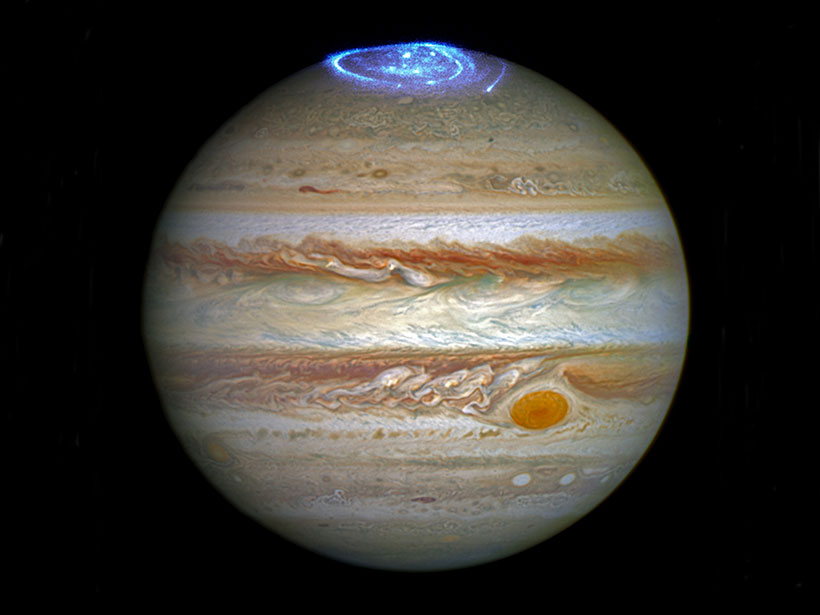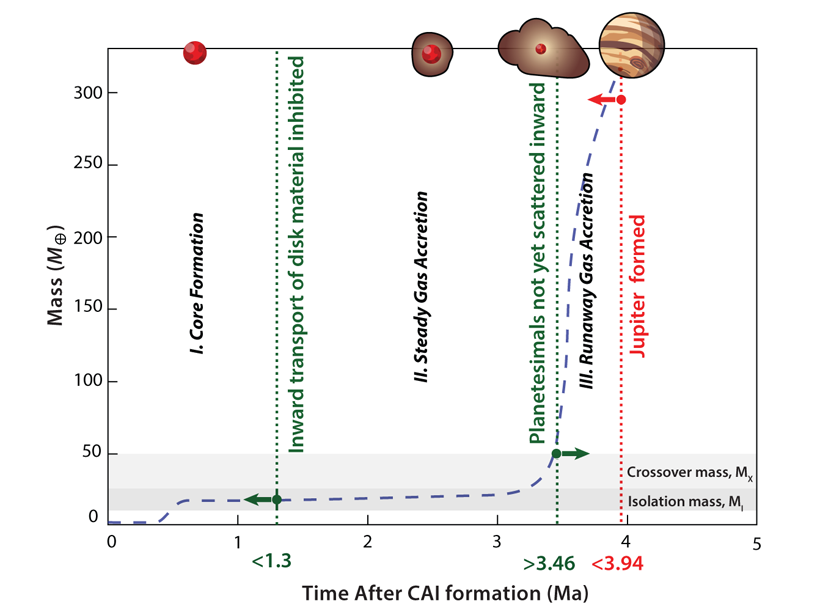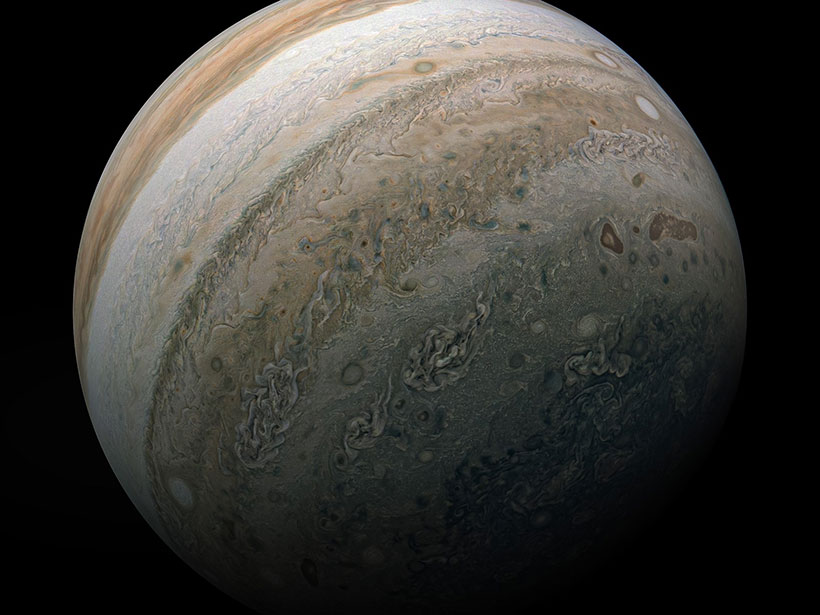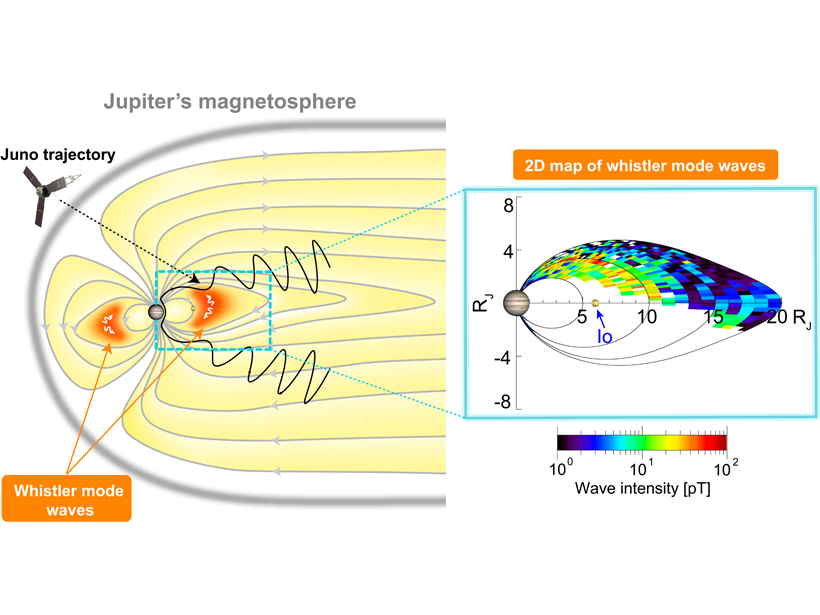Meteoric ions dominate the Jovian lower ionosphere due to their long lifetimes. Due to the large densities of the meteoric ions, conductance is enhanced independently of local time.
Jupiter
A Transition Zone Below Jupiter’s Clouds
The microwave radiometer aboard NASA’s Juno spacecraft reveals the hidden atmospheric circulations at work deep below Jupiter’s colorful clouds.
Could Low-Altitude Reconnection Power Jupiter’s Polar Aurorae?
Magnetic reconnection events less than 2 Jovian radii above the planet’s cloud tops could explain why Juno has yet to observe a source for Jupiter’s polar aurore.
Juno Detects Jupiter’s Highest-Energy Ions
Trapped ions discovered at midlatitudes can have energies exceeding 100 megaelectron volts per nucleon. Their detection adds to our understanding of the powerful radiation environment around Jupiter.
Fingerprints of Jupiter Formation
Meteorite isotopes, meteorite paleomagnetics, and planet formation models collectively show Jupiter formation via first slow then fast collection of material by core accretion in <5 million years.
Dawn Storms at Jupiter
Juno spacecraft observations provide the first global description of dawn storms in Jupiter’s aurorae, from their initiation to their end.
Radio on Jupiter, Brought to You by Ganymede
Another first from NASA’s Juno spacecraft: the detection of Jupiter radio emissions influenced by the moon Ganymede, over a range of about 250 kilometers in the polar region of Jupiter.
Juno Maps Water Ice Across Northern Ganymede
Infrared observations from instruments on the Juno spacecraft cover regions of Ganymede not visible to Earth-based telescopes.
A Juno Era Model of the Jovian Magnetosphere
Updating a model developed during the Voyager flybys will enable better mission planning and a deeper understanding of Juno data.
A Whistle Here, There, and Everywhere on the Giant Planet
NASA’s Juno spacecraft is “hearing whistles” all over the place on Jupiter, a type of natural plasma waves called whistlers that are sometimes associated with atmospheric lightning.










